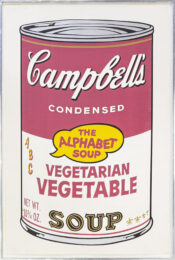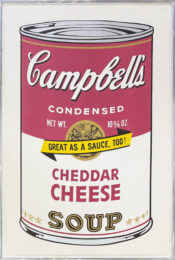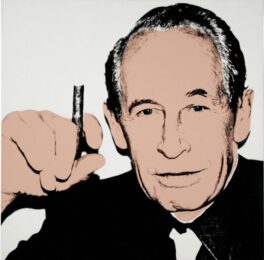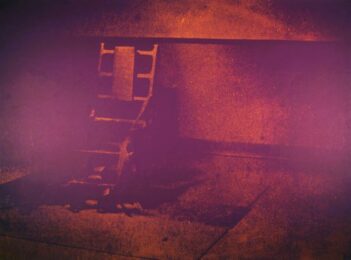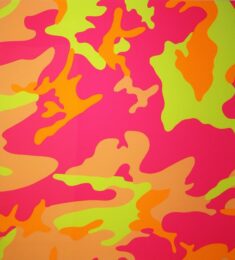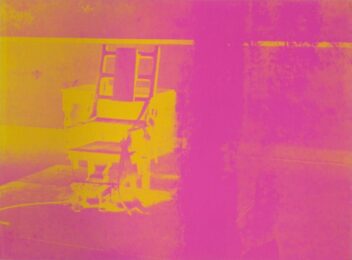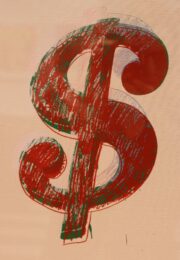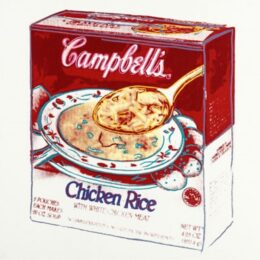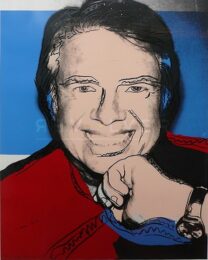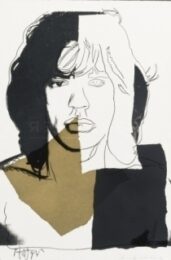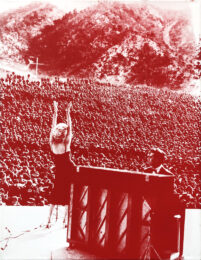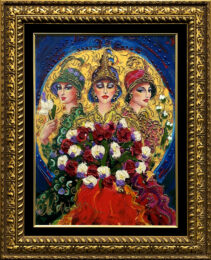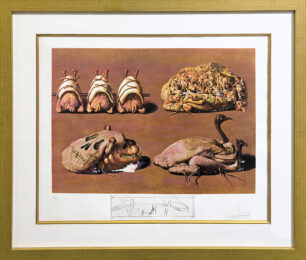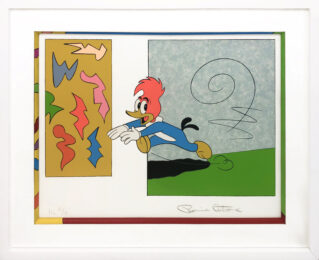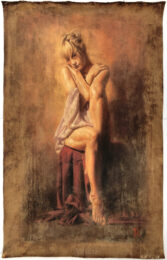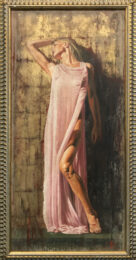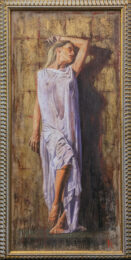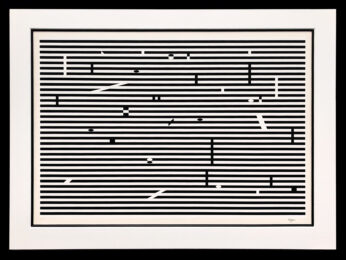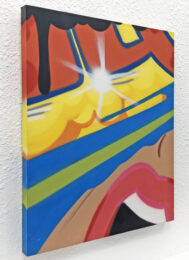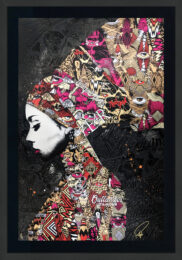Details — Click to read
Artist: Andy Warhol
Title: Wild Raspberries FS IV.126-143
The complete book, comprising 18 offset lithographs, 3 with hand-coloring, (one of which is a double plate), printed title page and two blank pages (as issued), with recipes by Suzie Frankfurt on laid paper, some pages interleaved with the original fuchsia tissue paper, bound (as issued) in original fuchsia board. Stamped by the Andy Warhol Art Authentication Board.
In 1959, interior designer and bohemian hostess Suzie Frankfurt stumbled upon the work of the young Andy Warhol at Serendipity in New York City. Suzie was very taken with the ‘magical watercolors’ she saw and contacted Warhol. The two met for the first time at the fourth-floor walk-up that Warhol shared with his mother.
Suzie and Andy decided to collaborate on a cookbook together. Andy did the illustrations and Suzie wrote the recipes, which were intended to be humorous and poke fun at their social circle who, for the most part, did not cook. They titled their book Wild Raspberries after the 1957 movie Wild Strawberries written and directed by Ingmar Bergman. Nineteen Warhol illustrations accompany the amusing recipes which were transcribed in calligraphy by Andy’s mother. Andy and Suzie brought the completed pages down to the Lower East side where a group of rabbis bound them into books. The total number of completed books is not known but is said to be around 34. A few were sold, but most were given away to friends as Christmas gifts.
About the Artist: Andy Warhol (American, 1928–1987) was a leading figure in the Pop Art movement. Like his contemporaries Roy Lichtenstein and Robert Rauschenberg, Warhol responded to mass-media culture of the 1960s. His silkscreens of cultural and consumer icons—including Marilyn Monroe, Elizabeth Taylor, Campbell’s Soup Cans, and Brillo Boxes—would make him one of the most famous artists of his generation. “The best thing about a picture is that it never changes, even when the people in it do,” he once explained. Born Andrew Warhola on August 6, 1928 in Pittsburgh, PA, he graduated from the Carnegie Institute of Technology in 1949. Moving to New York to pursue a career in commercial illustration, the young artist worked for magazines such as Vogue and Glamour. Though Warhol was a gay man, he kept much of his private life a secret, occasionally referencing his sexuality through art. This is perhaps most evident in his drawings of male nudes from the 1950s, and later in his film Sleep (1963), which portrays the poet John Giorno nude. In 1964, Warhol rented a studio loft on East 47th street in Midtown Manhattan which was later known as The Factory. The artist used The Factory as a hub for movie stars, models, and artists, who became fodder for his prints and films. The space also functioned as a performance venue for The Velvet Underground. During the 1980s, Warhol collaborated with several younger artists, including Jean-Michel Basquiat, Francesco Clemente, and Keith Haring. The artist died tragically following complications from routine gall bladder surgery at the age of 58, on February 22, 1987 in New York, NY. After his death, the artist’s estate became The Andy Warhol Foundation and in 1994, a museum dedicated to the artist and his oeuvre opened in his native Pittsburgh. Today, his works are held in the collections of the Art Institute of Chicago, Museum of Modern Art in New York, and the Tate Gallery in London, among others. A major retrospective of Warhol’s work took place at the Whitney Museum of Art in New York in 2019.













